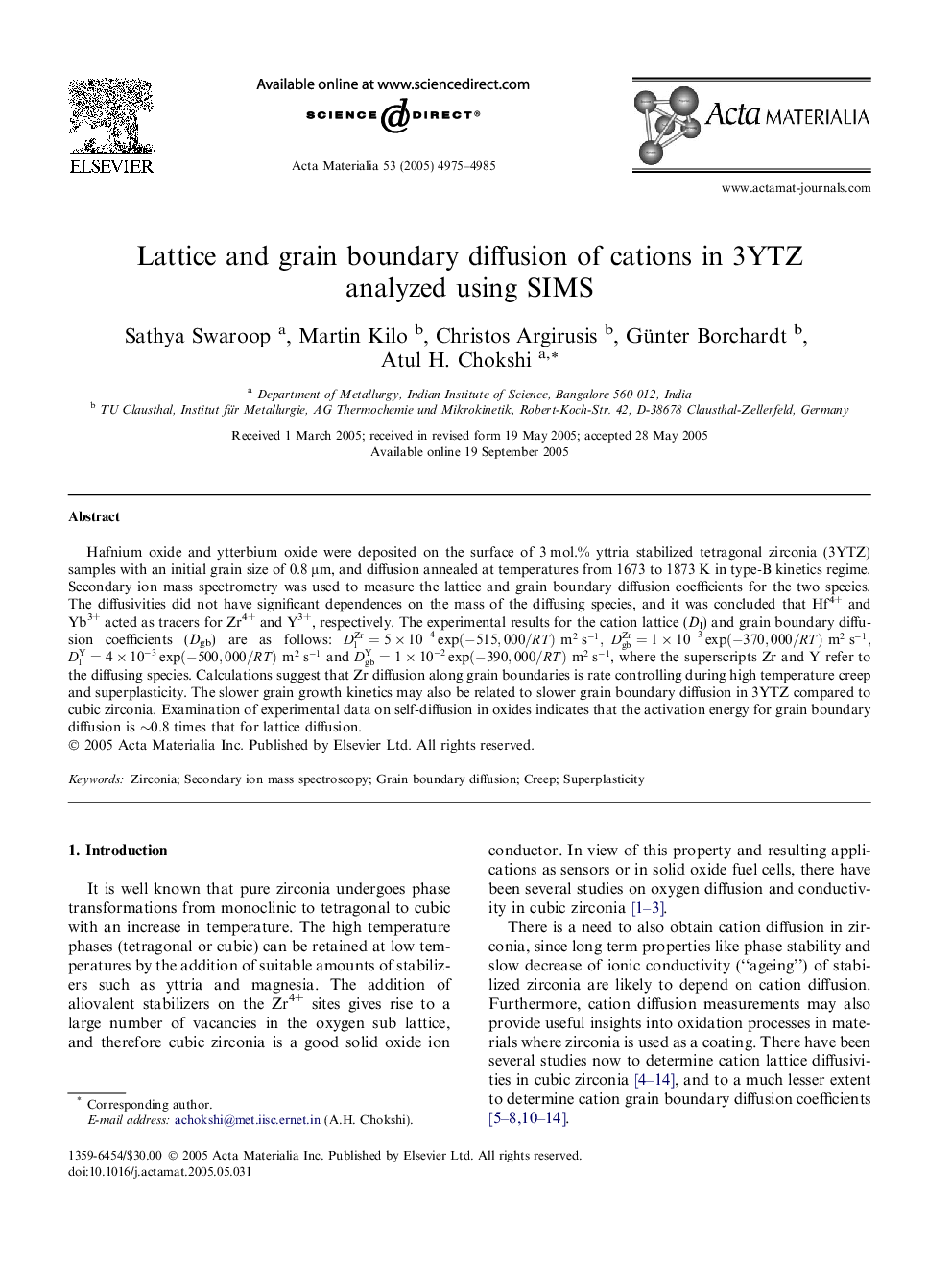| Article ID | Journal | Published Year | Pages | File Type |
|---|---|---|---|---|
| 1451286 | Acta Materialia | 2005 | 11 Pages |
Hafnium oxide and ytterbium oxide were deposited on the surface of 3 mol.% yttria stabilized tetragonal zirconia (3YTZ) samples with an initial grain size of 0.8 μm, and diffusion annealed at temperatures from 1673 to 1873 K in type-B kinetics regime. Secondary ion mass spectrometry was used to measure the lattice and grain boundary diffusion coefficients for the two species. The diffusivities did not have significant dependences on the mass of the diffusing species, and it was concluded that Hf4+ and Yb3+ acted as tracers for Zr4+ and Y3+, respectively. The experimental results for the cation lattice (Dl) and grain boundary diffusion coefficients (Dgb) are as follows: DlZr=5×10-4exp(-515,000/RT)m2s-1,DgbZr=1×10-3exp(-370,000/RT)m2s-1,DlY=4×10-3exp(-500,000/RT)m2s-1 and DgbY=1×10-2exp(-390,000/RT)m2s-1, where the superscripts Zr and Y refer to the diffusing species. Calculations suggest that Zr diffusion along grain boundaries is rate controlling during high temperature creep and superplasticity. The slower grain growth kinetics may also be related to slower grain boundary diffusion in 3YTZ compared to cubic zirconia. Examination of experimental data on self-diffusion in oxides indicates that the activation energy for grain boundary diffusion is ∼0.8 times that for lattice diffusion.
